Electrifying Brooklyn
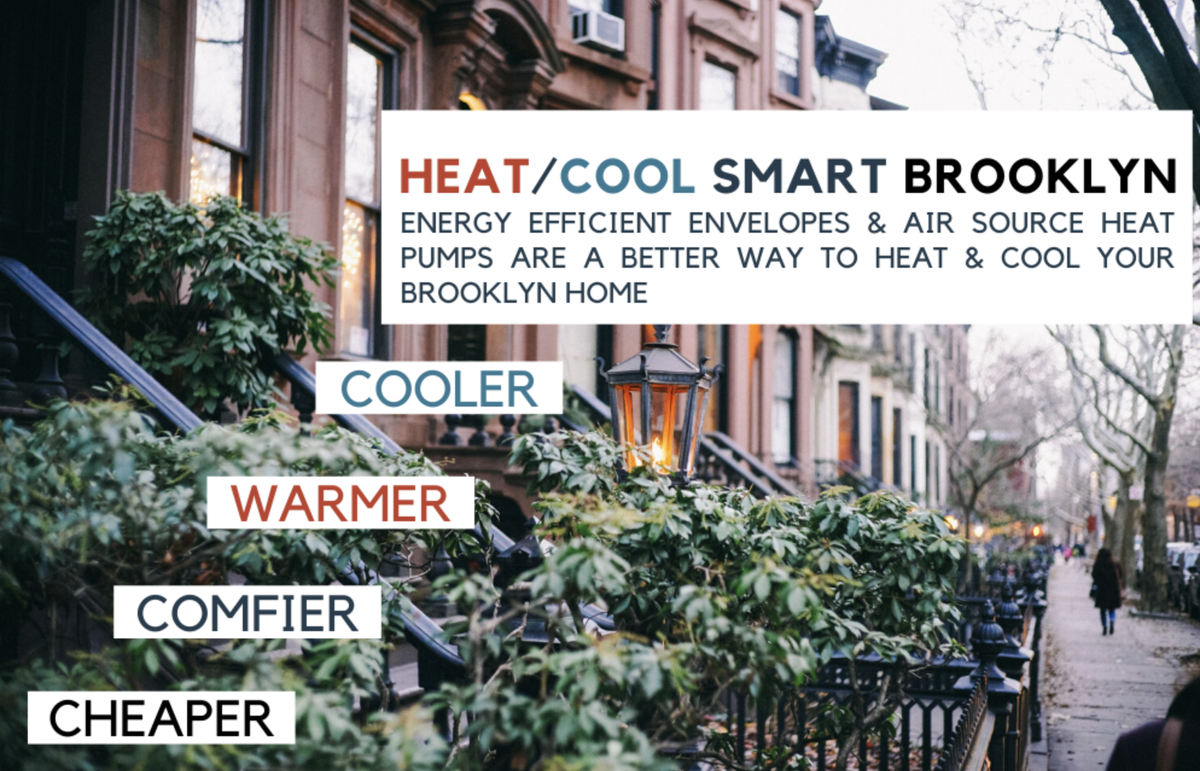
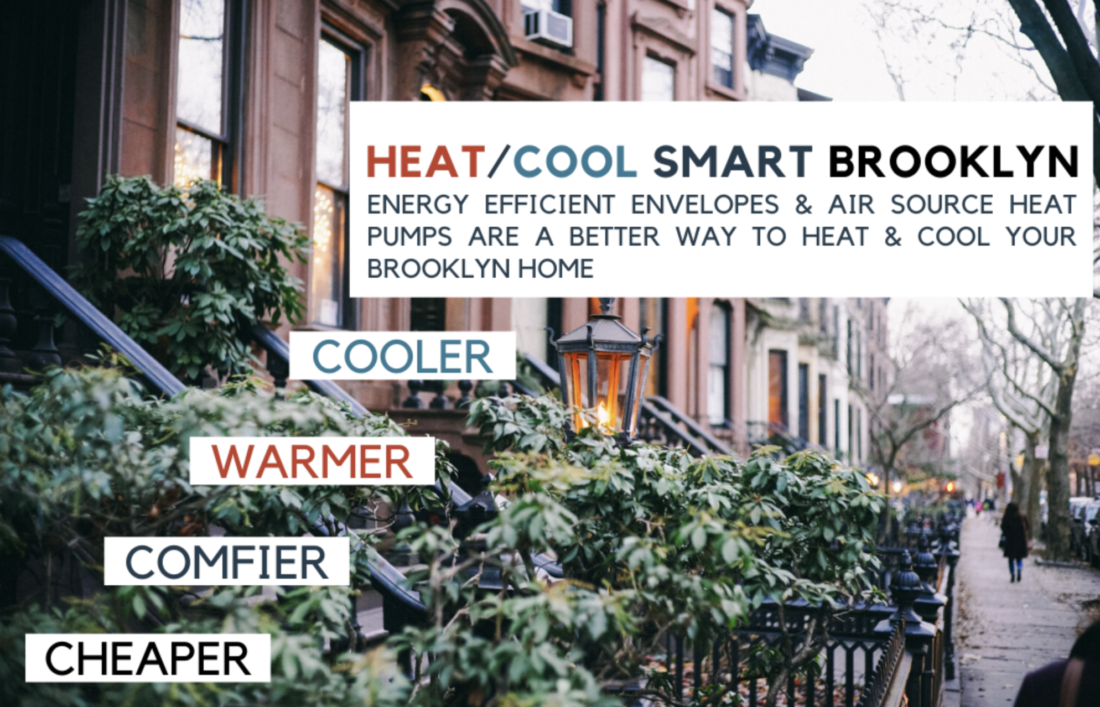
By Martha Sickles, HCSB
Brooklyn brownstones, rowhouses, small multifamily, and commercial buildings are trading in their polluting fossil fuel-generated heating systems for clean and efficient air source heat pumps (ASHPs). Reaping the benefits of lower energy usage, increased comfort, low maintenance, and cleaner, healthier and safer homes, building owners, participating in the Heat/Cool Smart Brooklyn (HCSB) campaign, often receive substantial incentives and financing with zero upfront costs. There has never been a better time to improve your building while reducing your carbon footprint to mitigate climate change.
So how do cold climate ASHPs work?

In the winter, ASHPs extract heat from the air outside, and distribute it inside the building. In warmer months the process is reversed providing cooling by pulling heat out of the building. With improved building insulation, ASHPs can provide all of a home’s heating and cooling needs all year long. These all-in-one systems reduce energy use and have a long life span of around 15 years.
With different zones, they increase the flexibility of temperature control throughout the building enabling greater savings and carbon reduction. Air source heat pumps reduce moisture and, with added filters, purify the air improving the health and safety of your building. The systems consist of interior air handlers and external condensers. Also called mini-splits, they may be ducted or ductless.
HCSB, with their participating contractors: Green Team Long Island, Arnica Heat and Ventilation and Green Home Logic, are working with clients in varied building types in the target areas of Community Districts 2 and 6 in Brooklyn and beyond.

HCSB, managed by the NYC 2030 District, is sponsored by the Brooklyn Borough President’s Office, one of two campaigns promoting clean heat and building envelope enhancements in the borough.
“The Clean Heating and Cooling Community Campaigns tackle one of the biggest sources of emissions in our city, help homeowners save money, and provide job training for local residents seeking employment in our burgeoning green economy. It’s a win-win-win. We’ve already seen myriad examples of its success, including at the historic Montauk Club, as well as at residential buildings on South Oxford Street and Henry Street. We need to continue building on this progress to ensure all building owners who are eligible know how to take advantage of this groundbreaking initiative. Our office is proud to be partnering on this campaign with Community Districts 2 and 6, as well as the New York State Energy and Research Development Authority (NYSERDA), and I thank them for their support,” said Brooklyn Borough President Eric Adams.
NYSERDA provides free or low-cost building assessments, advantageous financing, technical assistance and funding for workforce development necessary to grow the industry and meet the growing demand for building electrification. In 2019, New York State and New York City committed to reducing greenhouse gas levels by 85% and 80% respectively from 1990 levels by 2050, mandated in the Climate Leadership and Community Protection Act (CLCPA) in the case of New York State and the Climate Mobilization Act (CMA) in New York City. As 70% of New York City’s carbon emissions are produced by buildings, clean heating and cooling is critical to reach climate goals.
A free building evaluation is the first step in the program process to assess the viability of ASHPs and envelope improvements to make your property electrification ready. These improvements include roof/wall insulation, air sealing, rim joist insulation, window and door weatherization or replacement. Brooklyn building owners are stepping up to this challenge.
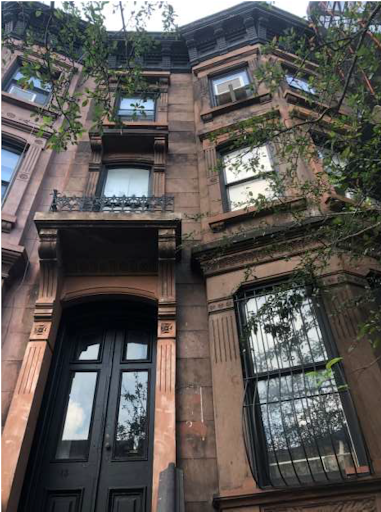
Bob Gilbert attended an HCSB webinar to find solutions for the Montauk Club, a commercial condo, and his four-family brownstone, both with steam heating systems.
A former energy auditor and contractor, Bob is a sophisticated client with experience installing ASHPs in two of his apartments. He values building audits that inspect for health and safety issues, air leakage, and levels of insulation. A home’s energy efficiency is an important metric in convincing owners they should invest in making the building envelope more efficient and “heat pump ready.”
“Envelope improvements are the most cost-effective thing to do,” says Bob, “allowing the installation of smaller equipment that saves money over time and reduces drafts in your building.”
Enrolling in the HCSB program helped Bob get project proposals for three apartments, eventually installing Mitsubishi systems. Incentives from the NYS Clean Heat program covered 37% of the cost.
“The systems provide my tenants with increased comfort and decreased moisture and noise. They can better control their heating and cooling at a reasonable cost. “
The Montauk Club, a historic men’s club, recently developed into a commercial condominium, is HCSB’s first commercial project. The Club owners needed to replace the deteriorating and costly cooling tower and determined that ASHPs are the best solution.
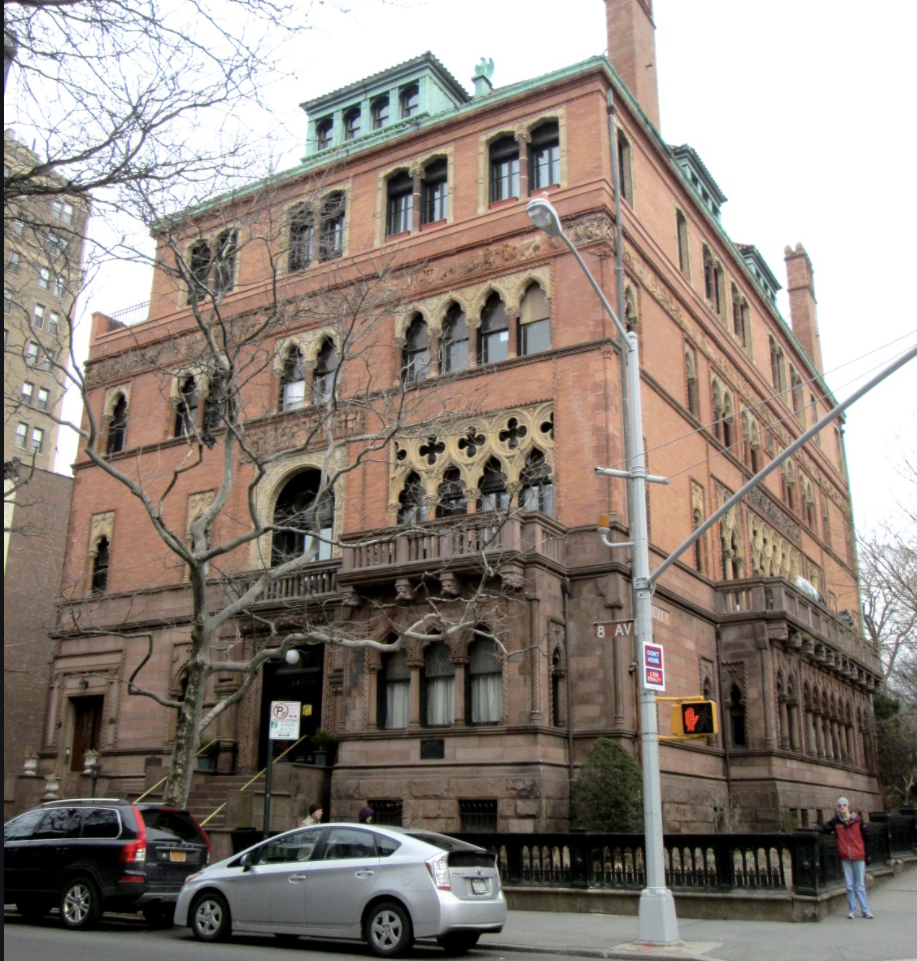
“The NYS Clean Heat incentives should fund from one third to one half of the system’s installation cost. I am contemplating a leasing arrangement with no up-front payment and worry-free long-term maintenance over fifteen years”, said Bob.
The case studies show how HCSB facilitates various clean heat solutions at affordable costs.
CASE STUDY 1: South Oxford St.
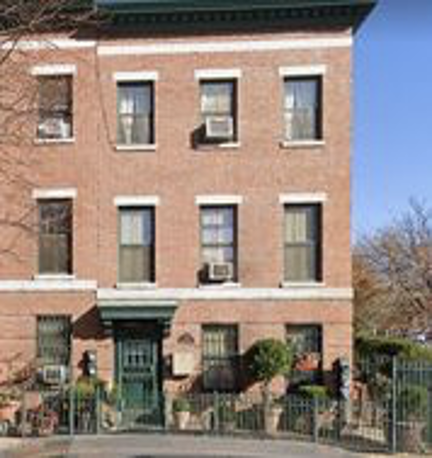
Building Type: 3 family brick house with a gas-fueled boiler
Installation: Three separate Fujitsu ductless multi-zone systems with three 3-ton condensers placed on the first floor. Three interior units for the top two units and four on the first floor and basement unit ranging from 7,000 to 18,000 BTU.
Cost: $45,500.
Incentives: $20,800
Owner cost: $24,700
Financed over 15 years at 3.39% interest with NYSERDA sponsored loan.
Monthly cost: Approximately $179 Projected annual savings: $400 to 500 per unit or $1,200-1,500.
CASE STUDY 2: Henry St.
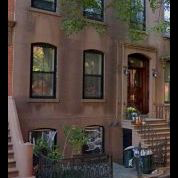
Building Type: 4 unit brownstone
Installation: Only in one ground floor unit. Daiken system with a three-ton outside condenser and three interior mini-split Daiken evaporators ranging from 9,000 to 18,000 BTUs.
Cost: $14,222
Incentives: $6,320
Cost to owner: $7,902
Financed over 15 years at 3.39% interest.
Monthly cost: Approximately $58
Projected annual savings: of $400 to 500
HCSB also provides professional training for ASHP installers, homeowners, and folks interested in exploring clean heating and cooling as a profession. Course links for Best Practices for ASHP Maintenance courses are available on the HCSB website. Opportunities are also available for clean energy workforce training and internships through NYSERDA’s website.
Visit the HCSB website: HeyBrooklyn.org for more information and to sign up for program services for your residential or commercial building.



